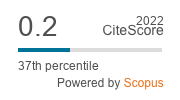Submissions
Submission Preparation Checklist
As part of the submission process, authors are required to check off their submission's compliance with all of the following items, and submissions may be returned to authors that do not adhere to these guidelines.- The submission has not been previously published, nor is it before another journal for consideration (or an explanation has been provided in Comments to the Editor).
- The submission is in Italian, English, French or Spanish.
- The abstract, keywords and title of the proposal, when necessary, are also provided in English translation.
- An anonymised copy is submitted for double-blind peer review (Studies, Notes and Contributions for Monographic Journals), and, if this is your first proposal, a short curriculum vitae.
- The submission file is in LibreOffice (odt), Microsoft Word (docx), or RTF document file format.
- The text adheres to the stylistic and bibliographic requirements outlined in the Author Guidelines.
Privacy Statement
The names and email addresses entered in this journal site will be used exclusively for the stated purposes of this journal and will not be made available for any other purpose or to any other party.



